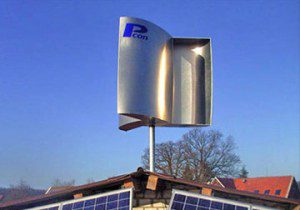
The Savonius wind turbine is a type of vertical-
Drag-
More of the wind’s energy is lost in the conversion to electrical energy. As a result, Savonius wind turbines are not commonly the preferred design for energy production either for commercial use or for home energy generation.
Uses For Savonius Wind Turbines
The Savonius wind turbine design is used wherever small amounts of power need to be generated by turbines that require little or no maintenance. They are also a good choice for many wind turbine uses other than electricity generation. Many anemometers are based on Savonius wind turbine design, as these instruments measure wind speed and efficiency is of no concern in that application. Savonius turbines are also used on deep-
Manufacturers
Savonius wind turbines are manufactured by a number of companies, including Huopeng Industry Co. Ltd. and Shenzhen. The price runs around $3 to $5 per watt of rated generating capacity.
Building Your Own
Although the Savonius wind turbine is not a good choice for home electricity production due to its low efficiency, it remains popular as an easy-
The blade design for a simple Savonius rotor is an S-
Advantages Of A Savonius Wind Turbine
The disadvantages of a Savonius turbine involve low efficiency and low power generation, which are of course quite serious for purposes of power generation and make this design not the best choice for producing significant amounts of power. The design does have advantages as well, however.
One major advantage is that the Savonius turbine is always facing into the wind, no matter what direction the wind is blowing. It does not need a mechanism for making it face into the wind, as lift turbines do.
The Savonius turbine also turns at relatively low speeds and does not stick out very far. These two things make the design less dangerous to birds, wildlife, and children than a lift turbine.
The Savonius turbine can be operated at lower elevations from the ground than a lift turbine as well, since it operates well in low-
Because it moves at lower speeds and does not have to be turned to face the wind, the Savonius wind turbine suffers from less wear and tear and stress than a lift turbine. As a result, it is much lower in necessary maintenance. Parts will not wear out as quickly and need replacing. All of this makes the Savonius a good choice where reliability and low maintenance are important, and high levels of power do not need to be generated.
